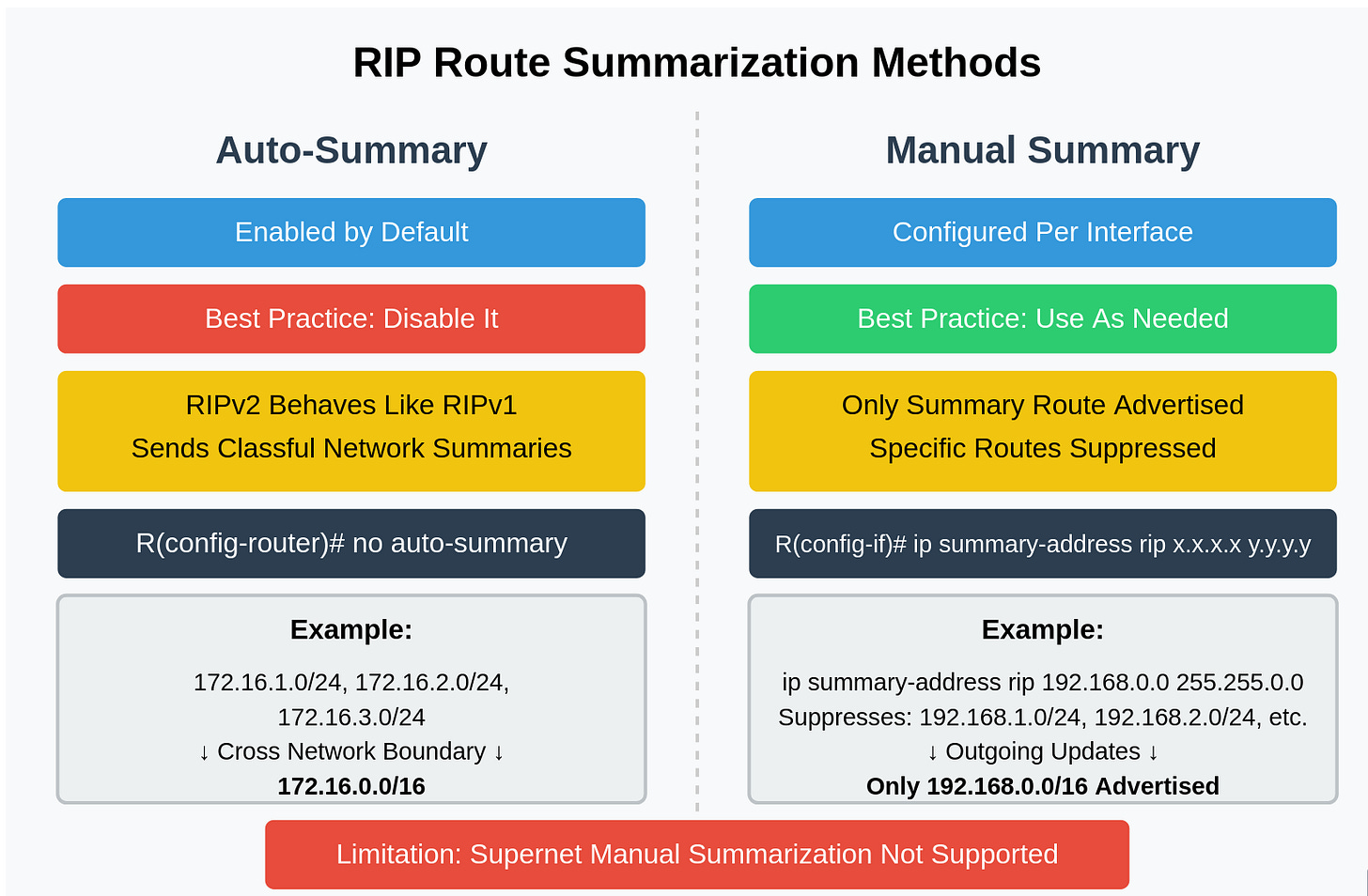PART 4: RIP Route Summarization
Routing Information Protocol
Route summarization in RIP can be performed in two ways: auto-summary and manual summary. Both methods help reduce routing table size and minimize update traffic, but they work differently.
Auto-Summary vs Manual Summary
Auto-Summary Behavior
When auto-summary is enabled (default setting):
RIP automatically summarizes routes to their classful boundaries when crossing major network boundaries
Example: Routes like 172.16.1.0/24, 172.16.2.0/24 become just 172.16.0.0/16 when advertised to a different major network
This behavior can cause problems with discontiguous networks
Manual Summary Configuration
Manual summarization offers more control:
Applied at the interface level, not globally
Allows custom summary addresses that don't have to follow classful boundaries
Only the summary route is advertised; specific routes are suppressed
No discard route is created by default (unlike EIGRP)
Important Limitations
Supernet manual summarization (beyond major network mask) is not supported in RIP
Example: You cannot configure
ip summary-address rip 1.0.0.0 224.0.0.0as the summary mask must be greater than or equal to the major network
Workaround for Supernet Summarization
To create a supernet advertisement in RIP:
Create a static route pointing to null0 for the desired supernet
Redistribute this static route into RIP
Filter out the more specific routes using distribute lists or other filtering methods
Route Selection Behavior
RIP will always install more specific routes in preference to summarized routes, following the longest-match principle of IP routing.
Best Practices
Disable auto-summary in most modern networks, especially with discontiguous subnets
Use manual summarization at network boundaries to reduce routing table size
Be aware that summarization affects how routing updates flow through your network
Consider the tradeoff between routing table size and path selection granularity
By understanding these summarization options, you can optimize your RIP network for better performance and stability.



